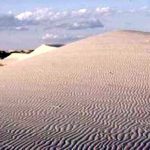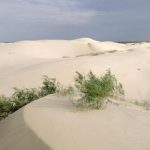State: Texas
Address 1: E Hwy 80
City: Monahans
Zip: 79756
Phone: 432-943-2092
Open all Year: Yes
Number of Sites: 26
Camp URL: http://www.tpwd.state.tx.us/spdest/findadest/parks/monahans_sandhills/
Full Hook: Yes
About: Activities include camping; hiking; picnicking; equestrian; bird and wildlife watching from the interpretive center windows, as they come to the watering stations; and sand surfing. Texas Camel Treks are held at the park.
Available facilities include a new Visitor/Interpretive Center built to ADA specifications; campsites with water; electricity, and shade shelters; campsites with water for tent campers; an equestrian day-use area, of approximately 600 acres, that has a staging area with hitching posts and water for horses; a group dining hall (constructed in 1903 first used as a railroad section house) with a kitchen and a restroom; an interpretive center with restrooms and a snack machine; a self-guided, 1/4-mile nature trail; and one working oil well. The Group Dining Hall is available for family reunions, birthday parties, etc. Also, there are picnic sites with shade shelters; a group picnic pavilion; a trailer dump station; and restrooms with showers (heated in the winter). Sand toboggans and disks can be rented at park headquarters. Take time to stop by the Texas State Park Store.
The park is only a small portion of a dune field that extends about 200 miles from south of Monahans westward and north into New Mexico. Most of these dunes are stabilized by vegetation, but the park is one area where many dunes are still active. Active dunes grow and change shape in response to seasonal, prevailing winds, so the visitor may experience a dynamic landscape.
Fresh water occurs at shallow depths within the dunefield and sometimes stands in shallow ponds in low areas between dunes. A quiet vigil near such ponds at dusk or dawn is the best way to observe wildlife such as mule deer, gray fox, coyote, bobcat, opossum, wild hog, porcupine, skunk, ground squirrel, jack rabbit, and cottontail.
Shinoak (Quercus havardii), one of the plants which stabilize the dunes, is not a stunted or dwarfed form of a larger tree but a fully mature plant which bears an abundance of large acorns and usually stands less than four feet tall.




